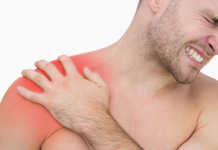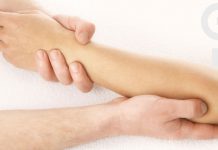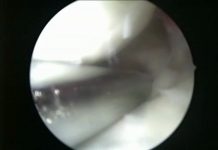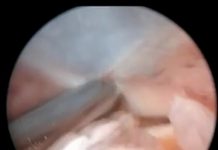PRP TREATMENT: NATURAL AND SAFE HEALING
WHAT IS PRP?
The blood enabling the life flow is composed of two main things: Liquid part (plasma) and cells.
The cells in the blood are divided into three as erythrocyte, leukocyte and platelet.
The platelet is the cell particles in the blood.
There are many growth factors in the platelet, the cell group that stops the bleeding and enabling rapid healing the in the wound area.
The growth factor is the protein particles special in the targeted area (tissue healing).
It is assumed that these particles have rapid biological healing effects on the injured tissue.
The platelets generally reach to the injured area through blood stream. The first aim is to create a stoper in the vein wall and stop the bleeding. In the next step, they try to heal the injured tissue and provide the normal process.
In addition to these reasons, it has been observed in the laboratory studies that the platelet involves some growth factors as concentrated. For example;
Plateletderivedgrowthfactor,Transforminggrowthfactor-ß, Endothelialgrowthfactor, Epithelialgrowthfactor, Insulinlikegrowthfactor, Hepotocytegrowthfactor, Fibroblastgrowthfactor, Cartilagederivedmorphogenic protein.
The scientific researches on the growtn factors has been continuing for almost 50 years. One of the biggest problems in the implementation is that they have too short life after the application. This is nature of the protein. As a solution to this problem, the groth factors are thought to be injected into the tissue in hematoma.
WHAT IS AUTOLOGOUS PRP?
“Autologous” means the own body of the person. In other words, the person’s own tissue is used instead of another person’s or animal’s as a source. In this method, the person’s own plasma, the growth factors, will be applied to the injured or sick tissue, in concentrated form. In PRP (platelet rich plasma), more growth factors are released than the normal plasma and more stemcells reach.
HOW IS PRP APPLIED?
PRP is the abbreviation of PlateletRichPlasma word. Some blood is taken from the person and the platelet is decomposed and concentrated. In this method, the autologous growth factors are concentrated and injected to the sick area. Another advantage is that there will be no need for conveyers like hematoma.
Before the implementation, the preparation and the application is performed in the clinic. The preparation longs less than 30 minutes before the application. Approximately 10-20 ml blood is drawn from your veins. After 10 minutes of centrifuge, the red blood cell and plasma are seperated from the platelet. At the end, the amount of platelet in the plasma will be 2-5 times increased compared to the amount in the platelet in the blood. The PRP acquired is injected to the joint or intraarticular.
In some diseases, more than one injection may be necessary.
The preparation of autologous PRP preparate is made by the microbiologist Dr. Haşim Şengör in the laboratory of our clinic.
NONAPPLICABLE CONDITIONS
It cannot be applied to the patients having coagulation disorder, infection on the area to be treated, low number of platelet, inflammatory diseases, chronic lung diseases or if the person is taking blood thinner medicines like heparin or warfarin.
If the person is taking blood thinner medicines like aspirin, Vitamin E ans St. John’sWort, he does not have to stop taking the medications but should be careful about the adverse effects.
HOW DOES PRP AFFECT?
Effect on the tendon problems:
The repair on the body after tendon injuries includes 3 stages. Inflammation, formation and remodelling stages. The period starts with the congestion on the area after the injury. This is called hematoma. Then the platelet in the hematoma get activated and release the growth factors. The area starts to receive cell flow and the draft healing tissue called granuloma occurs. This tissue starts to produce the protein called collagen which is the main substance of the body. Then, remodelling and increasing the quality of the scar tissue period starts. Altough it is NOW known that the gorwth factors ahe the early stimulating and rapid healing effects, it should be studied whether they have long term benefits.
Chronic Patellartendinitis (Jumpersknee)pain: ıt has been proved with animal experiments that PRP implementation has increased the healing speed of the patellartendon. (prpyayin3.pdf). Besides, in the prospective clinical studies made among the comperative groups, the group applied PRP treatment has shown better and quicker healing signs and highr level of development in the sports activities. (prpyayin5.pdf).
Affect on the cartilage problems:It has been proved with the animal studies that the PRP implementation has increased the healing speed of the wide cartilage losses and the quality of the healing tissues. (prpyayin4.pdf).
Osteoarthritis: It has been observed that 3 PRP implementation made into the joint of the patients having osteoarthritis have significantly relieved tha pain on the knee joint and increased the limits of the movements. However, the number of the patiens applied this implementation is low and the follow-u term is short (12 months). (prpyayin7.pdf). ıt has been observed in another study including 120 patients that the results of the PRP implementation is statiscally better than the results of the intraarticular hyaluronic acid injection (prpyayin8.pdf).
Fracture healing problems (ununion):In the scientific researches, it has been observed that PRP implementation has radiologically (x-rays taken), biomechanically (endurance tests made with some machines) and histologically (microscoic tissue examination) effected statistically better than non-implemented group (prpyayin6.pdf).
IMPLEMENTATION AREAS IN THE MUSCLE SKELETON SYSTEM DISEASES
Tendon injuries:
Tennis elbow (lateral epicondylitis) (prpyayin22.pdf)
Wrist tendiitis (prpyayin21.pdf)
Patellartendinitis, chronic knee pain (prpyayin3.pdf , prpyayin5.pdf , prpyayin23.pdf
Plantar fasciitis ( prpyayin16.pdf )
Chronic tendinitis of the shoulder joint (calcifictendinitis)
Stimulation of the tendon repair ( prpyayin2.pdf )
Accelration of the healing of the achilles tendon injuries (prpyayin2.pdf , prpyayin15.pdf )
Ligament injuries:
Medial colleteral ligament injuries of the knee joint ( prpyayin12.pdf , prpyayin13.pdf )
Chronic Medical colleteral ligament injuries of the ankle (deltoid)( prpyayin17.pdf )
Chronic Lateral collateral ligament injuries of the ankle ( prpyayin17.pdf )
Cartilage problems (abrasion-arthritis)
Repair of the wide cartilage abrasions-losses ( prpyayin4.pdf )
Knee joint arthritis-abrasion (osteoarthritis) ( prpyayin7.pdf )
In the treatment of Talusosteochondral injuries ( prpyayin19.pdf )
In the repair of the meniscus injuries ( prpyayin20.pdf )
Bone problems
Fracture healing problems (ununion) ( prpyayin6.pdf , prpyayin18.pdf )
In the treatment of the non-healing stres fractures of the athletes ( prpyayin17.pdf )
NON-IMPLEMENTAION AREAS OF PRP IN THE MUSCLE-SKELETON SYSTEM
- It has been observed that the PRP implementation has no effect on the suport or acceleration of the healing in the surgical treatment of the rotator cuff injuries of the shoulder joint. An extensive issue has been published about this subject ( prpyayin10.pdf , prpyayin11.pdf ).
- The PRP implementation has been applied to the stage 1-3 patients regarding the joint arthritis-abrasion (osteoarthritis). In other words, PRP treatment cannot be considered as an alternative to the surgical treatment of the osteoarthritis. It cannot be thought that PRP treatment can be an alternative for a patient indicated with surgical treatment (total prosthesis etc.) by an orthopedic specialist. New studies should be made about this subject.
- It can be used in the medial and lateral collateral ligament injuries of the knee ( prpyayin13.pdf ). However, for final results, clinically controlled studies are required ( prpyayin12.pdf ).
PROBABLE COMPLICATIONS
- There is no adverse effect of the PRP implementation. The preparate used is prepared from the own tissue (blood) of the person. No allergic reaction or tissue reaction has been observed.
- The most probable complication will be non-respond to the treatment. Since the treatment includes biotechnology, it is expensive. Besides, as the implementation is made with injection, it is a little painful. After all these problems, not receiving the expected results can be disappointing for both patient and the doctor.
- Even rarely, temperature increase, rushe and pain can be seen in the joint after the implementation. This may last for 1 to 3 days.
- Even when abiding by the sterilization rules, it has the risk of infection as every intervention.
There have been many scientific publications within the last 5 years regarding the usage of PRP in the orthopedic problems. Even though it is stated that most of the results of the studies are good; there are still some deficiencies. An issue published in Britis Medical Bulletin magazine in 2009 has detected the deficiencies of these publications. The most significant of them is the deficiency of standardization of the amount and type of growth factors in the injection preparate ( prpyayin1.pdf , prpyayin9.pdf , prpyayin12.pdf ).
INCOMING HORIZONS
PRP Shot May SubstituteforSurgery in ElbowInjury.AAOS 2012.American Academy of OrthopaedicSurgeons 2012 Annual Meeting.












